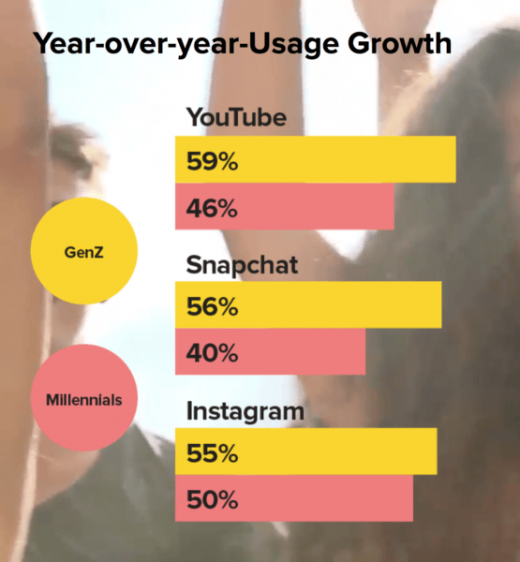Report: Traditional methods of personalization don’t work for millennials and Gen Z
The report from video platform VidMob also found that despite a waning interest in celebrity tie-ins, influencers still have an effect on Gen Z.

Want to connect with young people? Traditional means of personalizing ads to appeal to Gen Z and millennials are stale, according to new research from video platform VidMob.
VidMob surveyed 1,000 16- to 24-year-olds (Gen Z) and 1,000 25- to 34-year-olds (millennials) about a number of issues related to how they act online, including their behaviors around social media and video advertising.
The survey found that ads that young adults were more likely to interact with were those that reflect similar taste or style (55 percent) than ads with a celebrity (45 percent) or people the same age (29 percent). This is opposed to more traditional methods of personalization, such as matching gender, age, ethnicity or featuring a person’s name.
Variances emerged between the age groups. For example, 41 percent of Gen Z respond to ads they feel are visually beautiful versus only 32 percent of millennials.
The study found that 44 percent of Gen Z get annoyed or start to dislike brands when their ads are overly repetitive, while 34 percent of millennials either tune out or start to dislike. VidMob Chief Marketing Officer Stephanie Bohn told me that this is part of a trend toward younger audiences liking brands less due to ad repetition.
“Only one in four claim that seeing an ad multiple times helps them remember what is being advertised,” Bohn told me.
Nearly half of millennials (48 percent) prefer shorter videos compared to 34 percent of Gen Z, who are mostly interested in better music.
The report also delivered insights on how this demographic is using social media. Across both groups, 42 percent spent more time on social media this year over last year. And Stories on all platforms are getting a lot of play. A whopping 70 percent of Gen Z regularly watched Stories on Snapchat and Instagram.
The differences between the groups are also evident in the platforms they use:

And laughter seems to be the best medicine, with 56 percent of Gen Z females favoring humor over celebrity-focused videos (only 17 percent).
Bohn told me that “brands that present ads with style that resonates have a greater chance of being liked by young consumers.”
“Social users are bombarded with content, and it’s harder than ever for advertisers to capture attention, particularly the attention of GenZ,” Bohn said. “This report has implications for marketers looking to connect with younger audiences. Demographics and the celebrity factor also influence likability, but sense of style is the leading factor.”
Bohn said that though younger people are less interested in celebrity tie-ins, advertisers should still include them in their media mix.
“What we glean from these findings is that younger consumers respond better to ads that offer a reflection of themselves, or their aspirational selves,” Boh said. “Celebrity status seems to be less influential than personal style but certainly nothing to dismiss, especially when trying to reach GenZ.”
Marketing Land – Internet Marketing News, Strategies & Tips
(31)



